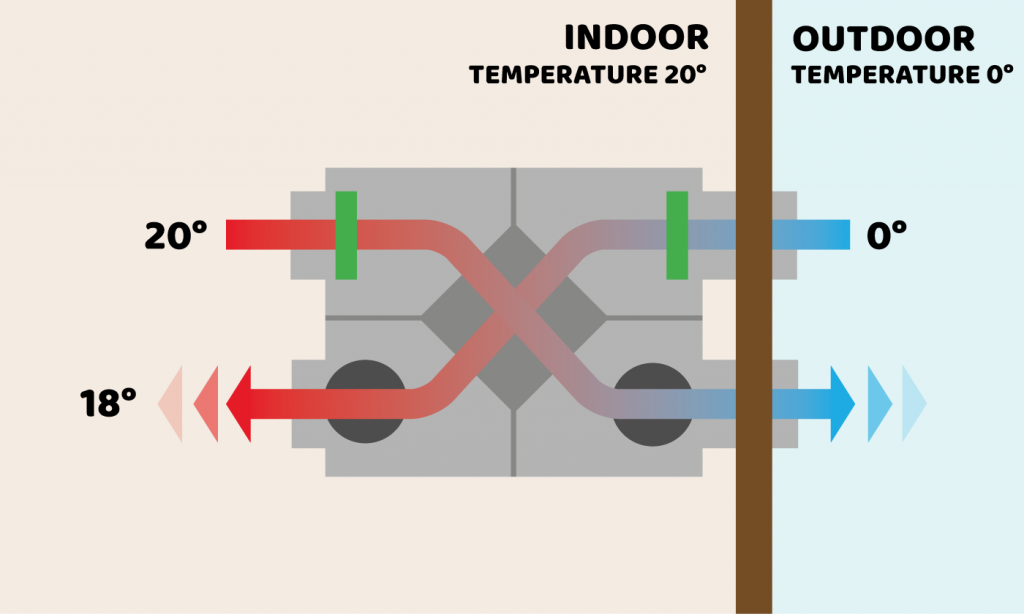Common Mistakes About HRV That Homeowners Should Know
Wiki Article
Checking out the Benefits of Heat Recovery Ventilation for Energy Efficiency in Houses
Heat Recovery Ventilation (HRV) systems use homeowners a useful method to boosting power efficiency. By redeeming warmth from outbound air, these systems can considerably reduce cooling and heating costs. Furthermore, they supply a stable supply of fresh air, enhancing interior air high quality and convenience levels. As property owners take into consideration lasting choices, comprehending the nuances of HRV systems ends up being increasingly essential. What variables should one assess prior to making such an investment?Recognizing Heat Recovery Ventilation Equipments

Exactly How HRV Boosts Indoor Air Quality

Power Financial Savings: The Monetary Benefits of HRV
Optimizing power efficiency, heat recovery ventilation (HRV) systems offer considerable economic advantages for home owners. By recouping and recycling warmth from exhaust air, HRVs noticeably decrease heating and air conditioning costs. This modern technology can cause energy savings of as much as 30%, depending on climate and usage patterns. Homeowners frequently observe reduced utility costs quickly after installation, making HRVs an economically wise investment gradually. Additionally, numerous regions provide motivations or rebates for energy-efficient upgrades, even more enhancing the economic appeal. As power costs remain to increase, the cost-effectiveness of HRVs ends up being significantly clear. Generally, the consolidation of HRV systems not only promotes energy performance however also adds to long-term economic cost savings for households.The Ecological Influence of Heat Recovery Ventilation
A considerable environmental advantage of heat recovery ventilation (HRV) systems hinges on their capacity to lower general energy intake. By reclaiming heat from exhaust air and transferring it to incoming fresh air, HRV systems minimize the requirement for energy-intensive heating and cooling down approaches. This reduction in power demand adds to reduce greenhouse gas emissions, as much less fossil gas is needed to keep comfy interior temperatures. In addition, HRV systems improve interior air high quality by effectively trading stagnant air with fresh outdoor air, lowering reliance on mechanical air conditioning systems that can hurt the environment. In general, the application of HRV systems supports lasting living techniques and aligns with worldwide efforts to battle climate find more information change by advertising power efficiency in household settings.
Picking the Right HRV System for Your Home
How can property owners ensure they select the right heat recovery ventilation (HRV) system for their needs? They ought to assess their home's size and format, as these factors influence airflow needs. Next, assessing the system's efficiency ratings is vital, as higher scores indicate better performance and energy cost savings. Property owners should additionally take into consideration setup and upkeep prices, contrasting different brand names and designs for value. In addition, it's crucial to examine sound levels, as some systems operate more silently than others. Consulting with cooling and heating experts can offer customized suggestions based upon particular home problems. Lastly, analyzing customer evaluations and guarantees can help in making an educated decision, guaranteeing that the picked HRV system efficiently boosts interior air quality and energy efficiency.Regularly Asked Concerns

How Frequently Should I Clean or Maintain My HRV System?
The frequency of find out this here cleaning or maintaining a warm recuperation ventilation (HRV) system usually relies on use and ecological aspects. Normally, it is suggested to do maintenance every 6 months to assure peak performance and air top quality.
Can HRV Solutions Aid Reduce Moisture Levels Indoors?
HRV systems can successfully reduce indoor moisture levels by exchanging stagnant, humid air with fresh, drier air from outside. HRV Heat Recovery Ventilation. This process assists preserve a well balanced indoor atmosphere, boosting comfort and avoiding moisture-related problems
What Is the Life-span of a Normal HRV System?
The lifespan of a regular heat recovery ventilation (HRV) useful link system varies, usually lasting in between 10 to 15 years. Routine upkeep can prolong its performance and operational life, ensuring peak efficiency throughout its use duration.Exist Any Kind Of Noise Worry About HRV Systems?
Sound interest in HRV systems can arise, especially from fan operation. Numerous modern-day units are made to decrease sound degrees, ensuring they operate quietly while maintaining effectiveness, which resolves possible disturbances in living environments.Can I Install an HRV System Myself, or Do I Required a Professional?
The individual contemplated whether to mount the heat recovery ventilation (HRV) system directly or hire an expert. Normally, while DIY installation is feasible, proficiency warranties proper capability and compliance with neighborhood building regulations, boosting system efficiency.Report this wiki page